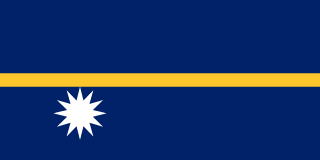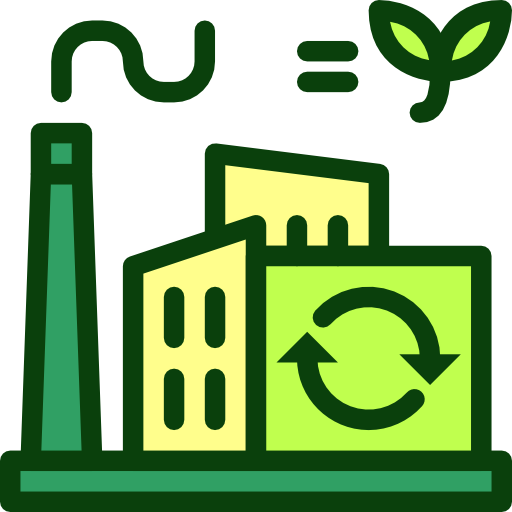Nauru - Geography

Here, let us take a look at the Geography of Nauru. Nauru is the third-smallest country in the world behind the Holy See (Vatican City) and Monaco; it is the smallest country in the Pacific Ocean, the smallest country outside Europe, the world's smallest island country, and the world's smallest independent republic; situated just 53 km south of the equator, Nauru is one of the three great phosphate rock islands in the Pacific Ocean -- the others are Banaba (Ocean Island) in Kiribati and Makatea in French Polynesia. Mother's mean age at first birth is (), whereas, the Maternal mortality ratio is 273 deaths/100,000 live births (2023 est.)
Geographical data of Nauru
| Location | Oceania, island in the South Pacific Ocean, south of the Marshall Islands |
|---|---|
| Geographic coordinates | 0 32 S, 166 55 E |
| Map references | Oceania |
| Tarrain | sandy beach rises to fertile ring around raised coral reefs with phosphate plateau in center |
| Natural Resources | phosphates, fish |
| Natural Hazards | periodic droughts |
| Irrigated Land | 0 sq km (2022) |
| Major rivers (by length in km) | |
| Major aquifers | |
| Land Boundaries | 0 km |
| Border Countries | |
| Coastline | 30 km |
| Climate | tropical with a monsoonal pattern; rainy season (November to February) |
| Area | |
| Total Area | |
| Land Area | 21 sq km |
| Water Area | 0 sq km |
| comparative Area | about 0.1 times the size of Washington, D.C. |
| Maritime Claims | |
| Territorial sea | 12 nm |
| Contiguous zone | 24 nm |
| Exclusive economic zone | 200 nm |
| Elevations | |
| Highest point | Command Ridge 70 m |
| Lowest point | Pacific Ocean 0 m |
| Land Use | |
| Agricultural land | 20% (2023 est.) |
| Agricultural land: arable land | arable land: 0% (2022 est.) |
| Agricultural land: permanent crops | permanent crops: 20% (2023 est.) |
| Agricultural land: permanent pasture | permanent pasture: 0% (2022 est.) |
| Forest | 0% (2022 est.) |
| Other | 80% (2023 est.) |
Population Distribution
Most people live in the fertile coastal areas, especially along the southwest coast
People and Society
In Nauru, the different Ethnic groups are such that we have: Nauruan 94.6%, I-Kiribati 2.2%, Fijian 1.3%, other 1.9% (2021 est.)
| Population | |
|---|---|
| Pop growth rate | 0.39% (2024 est.) |
| Birth rate | 20.2 births/1,000 population (2024 est.) |
| Death rate | 6.5 deaths/1,000 population (2024 est.) |
| Health expenditure | |
| Physicians Density | |
| Hospital bed Density | |
| Total fertility rate | 2.55 children born/woman (2024 est.) |
| Gross reproduction rate | 1.25 (2024 est.) |
| Contraceptive prevalence rate | |
| Est married women (ages 15-49) | 59.6% (2023 est.) |
| Literacy | |
| Education expenditures | |
| Net Migration rate | -9.8 migrant(s)/1,000 population (2024 est.) |
| Nationality | Nauruan | Nauruan(s) |
| Languages | Nauruan 93% (official, a distinct Pacific Island language), English 2% (widely understood, spoken, and used for most government and commercial purposes), other 5% (includes Gilbertese 2% and Chinese 2%) (2011 est.) |
| Religions | Protestant 60.4% (Nauruan Congregational 34.7%, Assemblies of God 11.6%, Pacific Light House 6.3%, Nauru Independent 3.6%, Baptist 1.5, Seventh Day Adventist 1.3%, other Protestant 1.4%), Roman Catholic 33.9%, other 4.2%, none 1.3%, no answer 0.3% (2021 est.) |
| Age Structure | |
| 0-14 years | 29.6% (male 1,493/female 1,433) |
| 15-64 years | 66% (male 3,220/female 3,309) |
| 65 years and over | 4.4% (2024 est.) (male 143/female 294) |
| Dependency Ratios | |
| Total dependency ratio | 51.5 (2024 est.) |
| Youth dependency ratio | 44.8 (2024 est.) |
| Elderly dependency ratio | 6.7 (2024 est.) |
| Potential support ratio | 14.9 (2024 est.) |
| Median Age | |
| Total | 27.8 years (2024 est.) |
| Male | 27.3 years |
| Female | 28.4 years |
| Urbanization | |
| Urban population | 100% of total population (2023) |
| Rate of urbanization | 0.18% annual rate of change (2020-25 est.) |
| Major urban areas (Pop) | . |
| Sex Ratio | |
| At birth | 1.04 male(s)/female |
| 0-14 years | 1.04 male(s)/female |
| 15-64 years | 0.97 male(s)/female |
| 65 years and over | 0.49 male(s)/female |
| Total population | 0.96 male(s)/female (2024 est.) |
| Infant Motality | |
| Total | 7.6 deaths/1,000 live births (2024 est.) |
| Male | 9.8 deaths/1,000 live births |
| Female | 5.3 deaths/1,000 live births |
| Life Expectancy at birth | |
| Total population | 68.6 years (2024 est.) |
| Male | 65 years |
| Female | 72.3 years |
| Drinking Water Sources | |
| Improved: total | total: 100% of population |
| Unimproved: urban | urban: 0% of population |
| Unimproved: total | total: 0% of population (2020 est.) |
| Alcohol consumption per capita | |
| Total | 2.44 liters of pure alcohol (2019 est.) |
| Beer | 0.54 liters of pure alcohol (2019 est.) |
| Wine | 0.09 liters of pure alcohol (2019 est.) |
| Spirits | 1.81 liters of pure alcohol (2019 est.) |
| Other alcohols | 0 liters of pure alcohol (2019 est.) |
| Tobacco use | |
| Total | 47.7% (2025 est.) |
| Male | 49.3% (2025 est.) |
| Female | 46.1% (2025 est.) |
Demographic profile
All Important Facts about Nauru
Want to know more about Nauru? Check all different factbooks for Nauru below.









